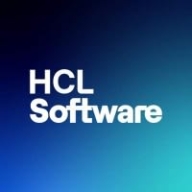


BigFix and AWS CloudFormation are key players in the IT management landscape, focusing on endpoint management and infrastructure as code, respectively. AWS CloudFormation appears to have the upper hand due to its streamlined automation and scalability capabilities.
Features: BigFix offers comprehensive device management with software deployment, compliance controls, and lifecycle management across multiple platforms. Meanwhile, AWS CloudFormation excels in automating infrastructure provisioning through predefined templates, supports swift deployment, and manages scalable AWS solutions effectively. Both products allow for a high degree of customization and integration within their scopes.
Room for Improvement: BigFix could improve its web user interface and enhance automation tools to ease management tasks. AWS CloudFormation faces challenges with error handling, customizable templates, and lacks robust multi-cloud support—areas where alternatives like Terraform excel.
Ease of Deployment and Customer Service: BigFix is preferred for on-premises deployments, benefitting from strong technical support and a vast community, although support quality can be inconsistent. AWS CloudFormation is predominantly used in cloud environments, offering easy deployment but can be complicated by syntax challenges. AWS's support is well-regarded for its quick resolution of issues.
Pricing and ROI: BigFix uses a tiered pricing model that might be expensive with additional modules, yet users report substantial ROI due to process standardization and reduced manual tasks. AWS CloudFormation is free, with costs linked only to resources deployed, making it cost-effective for AWS environments. The primary ROI stems from simplified infrastructure management and rapid deployment.
Everything we've gained from it makes my job easier day after day, and I see value in it as an engineer.
Microsoft Intune not only saves costs by reducing the number of personnel needed but also offers a comprehensive solution for managing laptops, applications, security, individual access, and enrollment.
Importantly, when someone leaves the company, it helps protect document access on their devices.
When a support ticket is submitted, it directly reaches someone with Intune support expertise.
When I contacted Microsoft, they had the same expertise, if not more, which is phenomenal because I felt heard and my problem was solved.
Sometimes, the support provided is excellent, and the representative is knowledgeable, while other times, the service needs improvement.
While this might be acceptable for some, it can be lengthy depending on the urgency of the issue.
Free support for AWS CloudFormation is not provided, and while some support is understandable due to its complexity, assistance for service-related issues should be accessible without a cost.
On a scale from one to ten, with ten being the highest quality, enterprise support provides timely responses, typically within four to eight hours.
Technical support from HCL is satisfactory unless there are customization requirements.
The scalability of Microsoft Intune is ten out of ten.
Ideally, we want to automatically segregate devices based on user properties like primary use, but currently, dynamic groups seem limited to device properties.
It supports organizations with 200 endpoints and those with more than 15,000 endpoints.
Splitting CloudFormation into multiple formations results in changes to resources like API gateway URLs and Cognito pools, which causes issues, especially when trying to maintain consistency across resources.
Adjusting capacity and functionality is a fundamental use.
BigFix requires some minimum configuration requirements.
We have not experienced downtime, bugs, or glitches.
It appears Microsoft Intune undergoes changes without informing customers.
Microsoft Intune has been very stable.
It has been reliable and efficient in all my deployments.
Data loss can occur when splitting or scaling applications due to changes in resources.
It's a service that has been around for years, and it handles large complex deployments and updates with very good consistency.
Features like unlocking devices sometimes fail, and the support offered for other operating systems is insufficient.
There are communication issues, so you might start working with a feature without knowing if it will be deprecated six months from now.
Many third-party companies offer single-pane-of-glass reporting that shows you what your update environment looks like, how your patch is doing, application status, etc., but Intune's reporting is not intuitive.
It presents challenges for users unfamiliar with coding, posing as a barrier to fully utilizing CloudFormation.
Creating microservices and connecting multiple APIs into a single API gateway can be challenging; documentation should address specific needs.
Managing the correct order of resource creation and some updates can be tricky, especially with interdependent resources.
Building a management console is quick and simple, taking only one to two hours for setup.
The problem was related to the hardware configuration and hardware specifications.
In addition to reporting improvements, there should be a feature for application control to allow or disallow certain applications from being executed on endpoints.
Introductory professional services, like a fast-track service, were included with our E5 membership, and there have been no additional costs.
The Intune suite and add-ons, such as batch management and remote help, are costly.
It costs approximately forty euros per user per month.
AWS CloudFormation is free.
The pricing is pretty good and now follows a subscription model similar to SolarWinds, making it easier for customers to subscribe and unsubscribe.
Intune excels in configuration and compliance management for Windows 10, ensuring devices receive timely updates and adhere to organizational standards.
Dynamic groups allow us to set conditions for automatic membership, eliminating the need for user intervention or manual review and ensuring a seamless workflow.
Windows Autopatch is the most valuable because it removes the burden of patch management.
I can see the entire infrastructure and its connections through code.
Managing, maintaining, and deploying become easier as it allows the creation of the same resources on multiple accounts, making it efficient for infrastructure management.
The BigFix features that have proven most effective include inventory, software delivery, software distribution, software catalog, and both software and hardware management.
I use this mainly to capture inventory for IBM products, and as BigFix was part of IBM, it gets easily integrated with IBM solutions.
BigFix supports something known as Patch Policies, which allows users to define that whenever critical patches are released, they should get evaluated against machines and automatically deploy them.
| Product | Market Share (%) |
|---|---|
| Microsoft Intune | 9.4% |
| BigFix | 7.9% |
| AWS CloudFormation | 2.4% |
| Other | 80.3% |



| Company Size | Count |
|---|---|
| Small Business | 116 |
| Midsize Enterprise | 46 |
| Large Enterprise | 152 |
| Company Size | Count |
|---|---|
| Small Business | 15 |
| Midsize Enterprise | 8 |
| Large Enterprise | 17 |
| Company Size | Count |
|---|---|
| Small Business | 30 |
| Midsize Enterprise | 12 |
| Large Enterprise | 66 |
Microsoft Intune provides centralized management of mobile devices and applications, ensuring security, compliance, and productivity through integration with Microsoft services like Microsoft 365 and Azure Active Directory.
Organizations use Intune for managing mobile devices and applications, enhancing security and compliance across platforms. With features like single sign-on, conditional access, and zero-touch deployment via Autopilot, it facilitates efficient operations. Intune's scalability, easy enrollment, and capabilities such as remote wipe support diverse device management, offering robust data protection and efficient operation. Despite its features, improvement areas include reporting, compatibility with non-Microsoft devices, and better support for macOS and Linux devices.
What are the key features of Microsoft Intune?
What benefits should users look for in reviews?
In industries such as finance, healthcare, and education, Microsoft Intune is implemented to ensure secure and compliant device management. Companies leverage its capabilities to deploy security policies and manage both corporate-owned and BYOD environments, facilitating a unified approach to data protection and compliance.
AWS CloudFormation provides a common language for you to model and provision AWS and third party application resources in your cloud environment. AWS CloudFormation allows you to use programming languages or a simple text file to model and provision, in an automated and secure manner, all the resources needed for your applications across all regions and accounts. This gives you a single source of truth for your AWS and third party resources.
HCL BigFix is a powerful patch management tool that enables organizations to simply control their patch management operations. It is designed so that IT security and operations teams can collaborate in the most effective way possible. Users that employ BigFix can find and fix issues with their endpoints faster than those that employ its competitors. It comes with thousands of security checks that can be deployed quickly and easily. These enable users to safeguard themselves from a wide variety of digital threats.
HCL BigFix Benefits
Some of the ways that organizations can benefit by choosing to deploy HCL BigFix include:
BigFix Features
Reviews from Real Users
HCL BigFix is a highly effective solution that stands out when compared to most of its competitors. Two major advantages it offers are its auto-patching capability and its user-friendly tools.
Santhosh K., the chief executive officer of Catnip Infotech Private Limited, writes, “The second valuable feature is, BigFix also has an auto patch updating feature, where the latest patches, and what is required for my system are automatically downloaded and kept ready for me. The solution applies the patch and notifies me after applying the patch. BigFix also gives me a ping saying that I should reset my system within a certain period of time, while the patch is being applied. Let's say, the patch is being applied and if there's an issue, the solution can revoke the applied patch, and revert back to the old state.”
Benedikt S., an application administrator, says, “It's very straightforward. The usability is very close to everyday technical tools that you use as a systems administrator. So it's quite user-friendly.”
We monitor all Configuration Management reviews to prevent fraudulent reviews and keep review quality high. We do not post reviews by company employees or direct competitors. We validate each review for authenticity via cross-reference with LinkedIn, and personal follow-up with the reviewer when necessary.